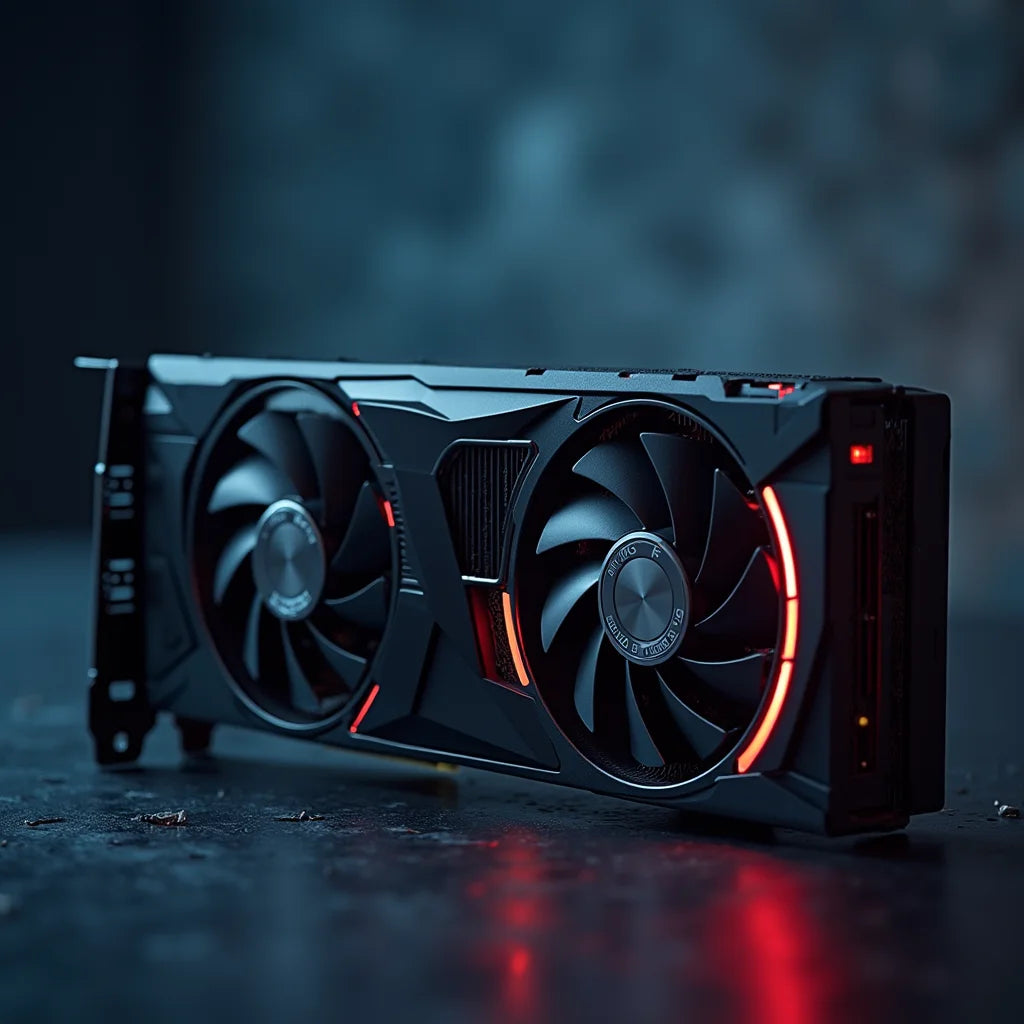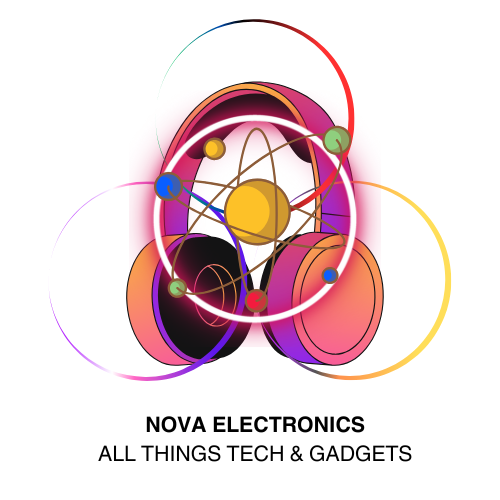
Advanced Graphics Cards Mistakes That Sabotage Performance
Nova Electronics Nova ElectronicsShare
Updated on: 2025-09-20
Table of Contents
- Did You Know? Advanced Graphics Cards Facts
- Comparison: Pros & Cons of Advanced Graphics Cards
- Buyer’s Checklist for Advanced Graphics Cards
- Final Thoughts & Advice on Advanced Graphics Cards
- Q&A: Advanced Graphics Cards
- About the Author
Advanced graphics cards power high-fidelity gaming, content creation, and data acceleration workloads. If you are evaluating high-end GPUs for 4K gaming or planning for next-generation graphics cards to support creative and AI tasks, this guide provides a clear path to an informed choice. It explains the core technologies that affect performance, how to read GPU benchmarking results, and how to match a card to your case, power supply, and display setup. By the end, you will be ready to select the best fit with confidence.
Did You Know? Advanced Graphics Cards Facts
- Ray tracing quality depends on dedicated hardware cores and smart upscaling. Look for hardware-accelerated ray tracing and frame generation support when targeting high frame rates at 4K.
- VRAM capacity influences texture quality and smoothness in large scenes. For 4K gaming and complex creative projects, many users benefit from 12 GB to 24 GB of VRAM.
- Memory bandwidth and cache design can be as important as raw compute. Wider memory buses, faster GDDR6/GDDR6X, and large caches reduce bottlenecks in high-resolution rendering.
- PCIe interface versions (for example, PCIe 4.0 or PCIe 5.0) rarely cap performance in mainstream use, but faster slots help in bandwidth-heavy workloads and future expansion.
- Thermal design and cooler size directly affect boost clocks and noise. Larger heatsinks and vapor chambers typically sustain higher performance at lower acoustic levels.
- Advanced graphics cards for AI and machine learning workloads benefit from FP16/FP8 support, tensor acceleration, and large VRAM, which improves dataset handling and model throughput.
- GPU benchmarking should use consistent settings and scenes. Compare results at your target resolution and quality, including ray tracing on/off, to avoid misleading conclusions.
Comparison: Pros & Cons of Advanced Graphics Cards
Pros of Advanced Cards
- Exceptional raster performance at 1440p and 4K with headroom for high refresh displays.
- Real-time ray tracing with upscalers and frame generation for cinematic visuals at playable frame rates.
- Ample VRAM and high memory bandwidth to support large textures, complex scenes, and multi-monitor setups.
- Specialized acceleration for AI, machine learning, and creative apps that leverage GPU compute.
- Robust software ecosystems with frequent driver optimizations and studio-certified packages.
Cons of Advanced Cards
- Higher power draw that demands strong power supplies and careful cable management.
- Larger coolers and multi-slot designs that may limit case compatibility or adjacent PCIe access.
- Premium pricing that delivers diminishing returns for some 1080p or casual use cases.
- Driver features and application support can vary; verify your key tools and games before purchase.
Buyer’s Checklist for Advanced Graphics Cards
Use this checklist to align a purchase with your performance goals, case, and budget. It covers the essentials for both gaming and workstation scenarios.
Power and Physical Fit
- Power supply capacity: Confirm recommended wattage from the vendor. Many advanced models suggest a unit in the 750 W to 1000 W range. Allow margin for CPU spikes and future upgrades.
- Connectors: Check for 8-pin PCIe leads or 12VHPWR. Use certified, high-quality cables. Avoid sharp bends and ensure airflow around cables.
- Case clearance: Measure length, height, and thickness. Some cards occupy 3 to 4 slots. Ensure front-panel radiator or drive cages do not block the card.
- Airflow: Intake and exhaust balance matters. Maintain clear airflow paths from front to back or bottom to top. Consider adding case fans to support sustained boost clocks.
Display Features and I/O
- Outputs: Ensure the right mix of HDMI and DisplayPort for your monitors, VR headset, or capture equipment.
- Refresh rate and HDR: Match the GPU with display resolution and refresh goals. For 4K at high refresh, confirm bandwidth support on the specific ports.
- Ray tracing and upscaling: Confirm support for hardware-accelerated ray tracing and a modern upscaler with frame generation to hit target frame rates.
Cooling and Noise
- Heatsink design: Triple-fan coolers and vapor chambers tend to sustain higher clocks with lower noise. Blower designs suit dense workstation builds with directed exhaust.
- Fan curves: Check whether the card supports zero-RPM idle and granular fan control. Well-tuned curves reduce noise without hurting performance.
- Case acoustics: Sound-dampened panels can help, but consistent airflow is more important for stability and longevity.
Software and Drivers
- Game-ready vs. studio drivers: For creative workloads, prioritize stability-tested drivers. For gaming, look for frequent optimizations and hotfix cadence.
- GPU benchmarking tools: Use in-game benchmarks or synthetic tests to compare at your target resolution. Keep settings identical when comparing multiple cards.
- Application certifications: If you rely on CAD, DCC, or AI frameworks, verify vendor certification and hardware acceleration paths for your stack.
For curated selections and component bundles that align with these checkpoints, explore these resources: Graphics Cards, PC Components, Contact, and News.
Final Thoughts & Advice on Advanced Graphics Cards
Start with your resolution and frame rate target. If you want the best advanced graphics cards for 4K gaming, prioritize high raster throughput, abundant VRAM, and a strong ray tracing pipeline with modern upscaling. For creators and engineers, weigh GPU compute features, VRAM, and driver certification. For advanced graphics cards for AI and machine learning workloads, ensure support for low-precision tensor operations, robust framework compatibility, and adequate cooling for sustained training runs.
Balance the card with a capable CPU, sufficient memory, and fast storage. A well-matched system prevents bottlenecks and maximizes value. Finally, focus on real workloads and your display setup. A precise fit to your use case will outperform a generic “fastest” build every time.
Q&A: Advanced Graphics Cards
What is the best advanced graphics card for 4K gaming?
The best choice depends on your frame rate target, ray tracing preference, and budget. Look for a flagship or near-flagship tier with 12 GB to 24 GB of VRAM, strong ray tracing hardware, and modern upscaling with frame generation. Evaluate GPU benchmarking at native 4K with and without ray tracing to see how the card behaves in your titles. If you aim for high refresh 4K, choose a model that sustains that performance in the most demanding scenes, not only in average FPS.
How much power supply wattage do advanced graphics cards require?
Many advanced cards recommend a power supply in the 750 W to 1000 W range for a typical high-performance desktop. The exact requirement depends on GPU power limits, CPU choice, overclocking, and peripheral count. Leave safety headroom above the vendor’s recommendation to handle transient spikes. Use high-quality cables, and ensure the correct connectors (such as 8-pin PCIe or 12VHPWR) are available and properly seated.
How should I read GPU benchmarking for fair comparisons?
Match the resolution, quality preset, and ray tracing settings across all tests. Look at 1% and 0.1% lows in addition to averages to gauge smoothness. Compare thermals and noise at load, since thermal throttling can mask differences in short runs. Include tests from your primary games or creative apps to ensure the results translate to your daily use.
Are next-generation graphics cards always worth the upgrade over high-end GPUs I already own?
Upgrade value depends on your current performance vs. needs. If your system meets your target FPS and feature requirements, incremental gains may not justify the cost. If you want higher frame rates at 4K, improved ray tracing, lower latency, or better AI acceleration, next-generation graphics cards can offer clear advantages. Use a cost-per-frame analysis at your preferred settings to quantify the benefit.
About the Author
Nova Electronics Nova Electronics
Nova Electronics Nova Electronics analyzes PC hardware trends and performance tuning for gaming, creative, and data workloads. With hands-on experience in system design, the team focuses on clear, actionable guidance for component selection. Thank you for reading, and feel free to reach out with your questions.
